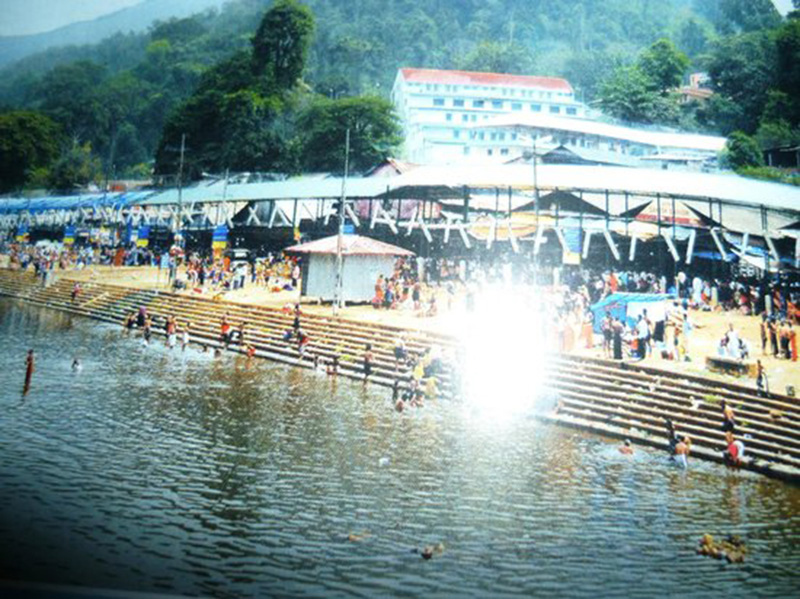The Holy Trek
Pampa — The Paradise
Nov 2014

The story of the sacred Pampa is well known to all. It is unbelievable that such a pleasing and soothing river should be found in such a dense jungle. It is the general belief that the spirits of the departed receive offerings in person beside the Pampa. The water is limpid, clear and refreshing, and it is no exaggeration to say that after taking a dip in the icecold waters of this river one no longer feels the fatigue of the journey. Scientifically the bracing effect of its water is explained by the fact that the river winds through a region full of medicinal herbs and the waters are unsullied by humans till the place where the pilgrims congregate.
The epic says that the Lord as Manikantha was first seen by king Rajasekhara of Pantalam on the banks of this river. The Lord has Himself said that Pampa is equal to the Ganges and the Sabari Hill to Varanasi. About a mile above the plains there is a confluence of the two rivers, Kallar and Pampa, which is called “Triveni”
Dawn and sunset here are a wonderful sight. First the long golden arrows speed across the sky, chasing away the darkness; slowly, one by one, the golden arrows become silvery, and finally the sun, with all his majesty, rises to dispel the remaining dusk. Even when we lie awake in a comfortable bed safe at home, counting the ticking of the clock, we stare at any slight unusual noise, get up, look around, and then lie down again, satisfied that nothing is wrong. Then the mind starts working. The night drags on in restless thoughts, awaiting the dawn to put an end to our anxiety. If this is the case when safe at home, think of the lot of the pilgrims spending their nights under the open sky, in the dense jungle, surrounded by blood-thirsty animals and hearing all kinds of weird noises. Yet they sleep well under the tender protection of the Lord. They too await the dawn, but not in restless thoughts, only in taking refuge in Him and in full faith in His mercy and protection.
At sunset it is somewhat different. There is practically no twilight in this latitude. The evening gets cooler and cooler until finally, all of a sudden, the sun disappears behind the tall trees and it is darkness—pitch dark.
Now comes the task of climbing the Neeli Mountain, the majestic Neeli which, in comparison with other two, Azhutta and Karimala, can rightly be called the emperor of mountains. Neeli is a very lofty, steep and slippery mountain and the ascent is much more difficult than that of the other two. Slowly the pilgrims move on, one behind another, till “Sabari Peetham”. This is the place where Sabari of the Ramayana lived in penance till she attained Nirvana at the hands of the Almighty who appeared before her as Lord Dharma Sasta.
Just near this place is said to be the Ponnampala Medu where the great rishis constructed a golden temple by their tapasic power in which to seat the Lord when he came in quest of leopard’s milk. If you stand there and look around, you behold a marvelous panorama: green valleys, deep ravines, lofty mountains on all four sides, and wild life; a sight the like of which it would be hard to find. Such might be the impression of one who was there on a picnic or for pleasure, but such enjoyment has no attraction for the pilgrims, since their hearts’ desire is set on the shrine of the Lord. Without losing time they move on.
From here it is only about half an hour’s walk on level ground to Saramkuttialu. This was the place seen by the king of Pantalam by his divine eye as the spot suitable for the construction of a temple to the Lord. There is no papal tree there.now, but the place is considered holy by all.
Now they approach the sacred eighteen steps. It is a convention generally followed that in approaching the temple from here the irumudi should be carried on one’s head till one gets darshan of the Lord, no matter how long one has to wait.
